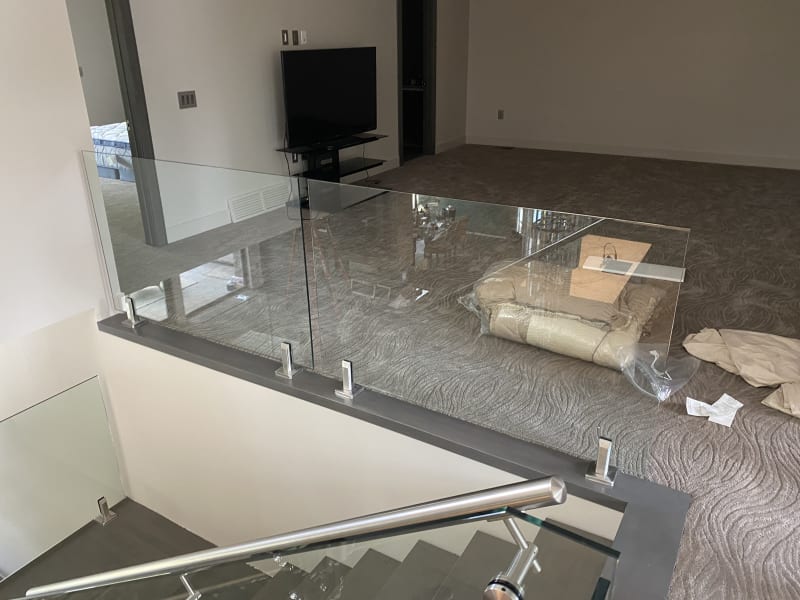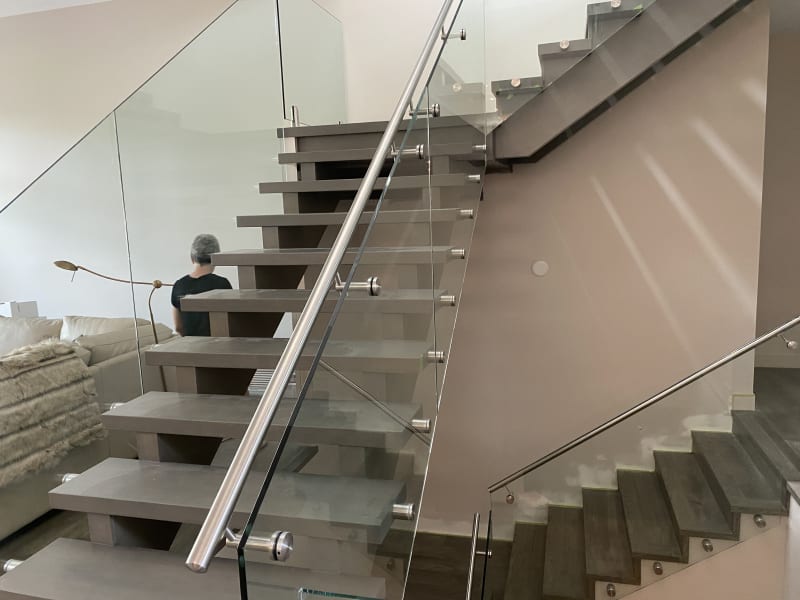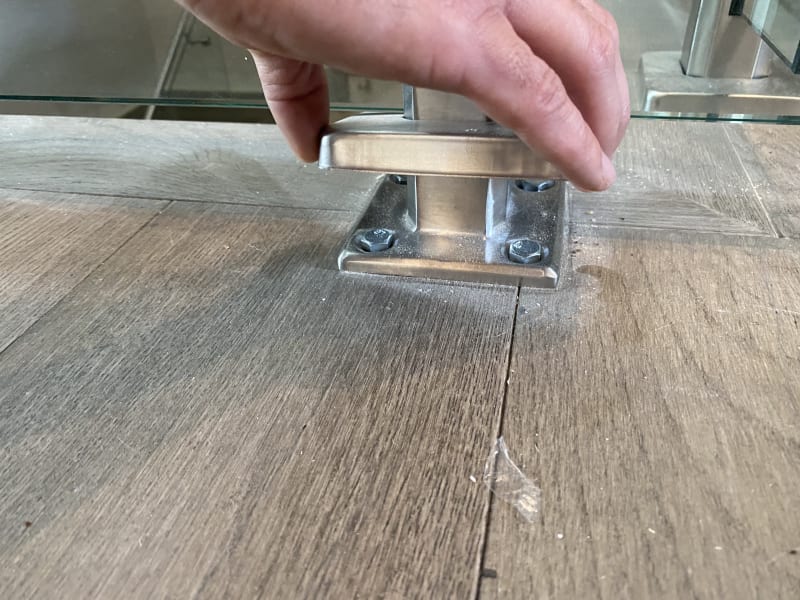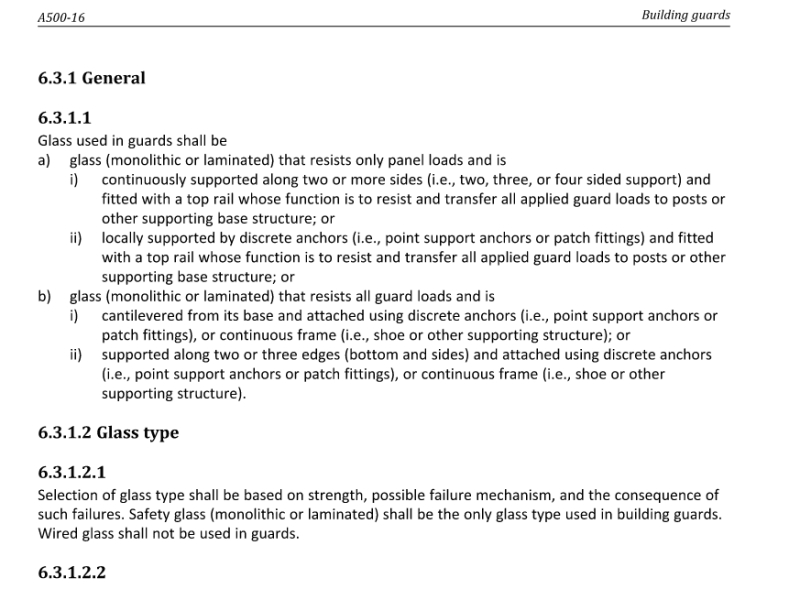I've been asked if I would be able to approve the attached glass guards (is balustrade the correct term?). I've never come across this before and I wanted to ensure I knew what all the considerations are for these designs. Looking through the code (Canada), it appears that the critical information is that it needs to be able to withstand certain minimum specified loads (0.5 kN/m or 1.0kN at any point, as well as 1.5 kN/m applied at the top of the guard) and that it must be safety glass of the laminated or tempered type conforming to CAN/CGSB-12.1-M. Now, I can easily check the capacity of the connection for the applied loading, but I feel that checking the glass is trickier (or at least something I don't have experience in). Does anyone have any experience with these types of guards? Anything I am missing?







